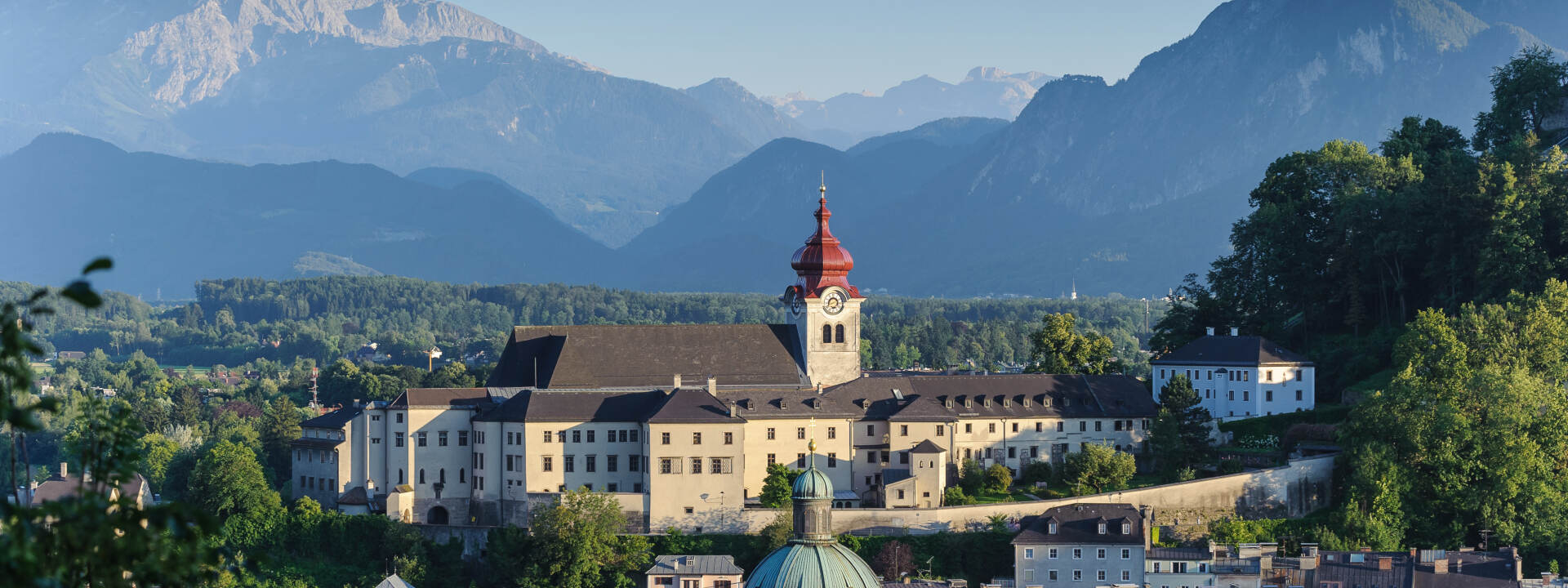
Nonnberg Abbey
Nonnberg Abbey in Salzburg is the oldest existing nunnery in the German-speaking region and became world-famous through the film The Sound of Music
History of Nonnberg Abbey
The nunnery was founded sometime between 712 and 715 by Saint Bishop Rupert of Salzburg on a terrace of the Salzburg Fortress Mountain. He appointed his relative Erentrudis as the first abbess. Since then, the abbey has existed uninterrupted which makes it the oldest nunnery in the German-speaking area.
The narrow abbey grounds are flanked by the fortress wall on the western side and surrounded by steep slopes on all others. This is why further expansion of the grounds were never possible and the buildings are all quite close together.
The early history of the building complex is shrouded in darkness. The Bavarian Duke and later Emperor Henry II was significantly involved in the building of the abbey. According to records, he donated the Ottonian Henry’s Basilica in gratitude to Saint Erentrudis for her help during a severe illness. The church was consecrated in 1009 in attendance of the emporer. It is the second oldest St. Mary’s Church in Salzburg.
In 1423, the church and large parts of the buildings were destroyed or heavily damaged in a major fire. 1464 saw the start of lengthy reconstructions, that took more than 30 years.
The ministerial life in the abbey continued throughout economic crises and times of war.
The first abbess Erentrudis of Salzburg was a champion of the poor and sick. She was worshipped as a saint. In 1624, she was named Salzburg’s Mother of the Nation. Her rock tomb is located in the crypt of the St. Mary’s Church.
Nonnberg Abbey and The Sound of Music
Nonnberg Abbey became famous all around the world through the movie “The Sound of Music”. Unlike the film portrays the story, Maria Auguste Kutschera wasn’t a nun yet but only a novice and governess in the abbey’s school before she was sent to the widowed Baron von Trapp’s house to temporarily care for his seven children.
In 1927, Maria Auguste and Georg von Trapp married in the Nonnberg Abbey Church. However, in the movie the wedding took place in the church in Mondsee.
The film features no interior shots of the abbey. Filming only took place in the cemetery and in front of the abbey.
Nonnberg Abbey is part of our Original Sound of Music Tour®.
Nonnberg Abbey today
The abbey houses an important collection of medieval manuscripts, gothic sculptures and painting.
Besides their conventual activities (housekeeping, library, archive, etc.), the nuns also run a ceramics manufactory, a guesthouse and a farm in the Erentrudishof, that has been producing organically for over 40 years.
Singing Nuns at Nonnberg Abbey
The nuns at Nonnberg Abbey sing not only in The Sound of Music. In fact, they sing Gregorian chants every morning at 6.45 am in the abbey church.